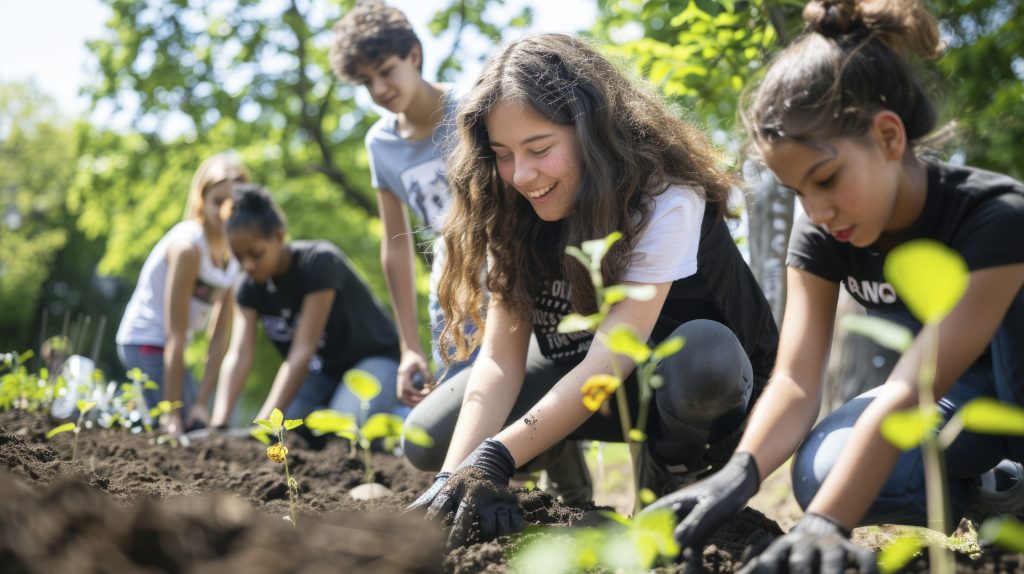Eco-friendly practices, climate-conscious transportation and other student travel tips ensure sustainability on your next class journey
Sustainable practices during student travel are paramount today. Mother Earth, our cosmic home, is battling severe afflictions brought on by centuries of neglect and exploitation at our own hands. She sneezes vicious hurricanes and tornados, coughs up relentless wildfires and irreversibly sweats melting glaciers—all symptoms of a planet pushed to the brink.
As stewards of this fragile orb, it’s our solemn duty to care for her and nurse her back to health. The antidote? Sustainable, eco-friendly student travel practices. This thoughtful approach to traversing the globe is about making mindful choices to reduce devastating environmental impacts. Follow these guidelines on your next field trip and feel good about your adventures.
Be sure to subscribe for FREE to Student Travel Planning Guide to discover more student and teacher resources for traveling with your troupe.
Eco-Friendly Practices for Student Travel Groups
Many people think their small changes won’t make enough difference to our planet’s destruction. That kind of thinking is what has led us to where we are. We can all do our part by implementing small but meaningful sustainable practices into student travel routines and daily life. While everyone should reduce, reuse and recycle, there are several green practices that will help heal our planet.
Slow Travel
Prioritize quality over quantity and spend more time in fewer places. Immerse yourself in a destination and absorb its full culture, cuisine, history and attractions. Enjoy one area in-depth rather than adding ten or twenty locations to your itinerary.
Conserve Water and Energy

Conserve water by utilizing reusable water bottles instead of plastic. You can also consider shortening your shower time and reusing towels instead of opting for freshly washed ones. Turn off lights, televisions, and other electronic devices when not in use to conserve energy. This practice significantly saves precious resources.
Participate in Sustainable Practices
Sustainable practices include activities for student travelers like hiking, biking, kayaking and canoeing. Guided tours and experiences for students include nature walks/hikes, eco-tours and educational environmental tours, which are available at many state and national parks and wildlife areas.
Support Local Businesses and Eat Locally Sourced Food
Eat at community restaurants that use fresh, locally sourced ingredients. This supports farmers and agricultural operations in the visited community. Through culinary ethnicity, you will gain a deeper understanding of the people while engaging with locals and their businesses.
Respect Wildlife and Natural Habitats
While this should be practiced every day, it’s a major factor in sustainable practices, especially in fragile ecosystems. When touring natural areas such as wildlife preserves, parks or seashores, remember to view wildlife from a distance. Don’t disturb natural habitats and do not feed wild animals.
Offset Your Carbon Footprint

A huge and often underrated sustainable practice is offsetting your carbon footprint. There are several ways to do this, including investing in renewable energy projects like solar and wind and donating money to recognized and vetted sustainability campaigns. Student travel groups can get involved in reforestation efforts by planting trees in plundered regions. Aside from donating to this important cause, here are some things educators can do in and out of the classroom with students:
- One Tree Planted is an organization that allows people to donate to the cause of reforestation. Their T.R.E.E.S. program stands for Teaching Reforestation, Environmental Engagement, and Sustainability, a free grade school program for K-12 full of incredible educational information and fun eco-activities.
- The University of Michigan offers remarkable K-12 STEM resources for teachers, including videos, podcasts, and activities for students to foster sustainable practices and green initiatives in and out of the classroom.
- The Arbor Day Foundation’s Tree Campus K-12 is an outstanding program that allows students to participate both inside and outside the classroom. Group leaders can get schools and communities involved in planting and encourage other educators to offer students a chance to interact with the trees.
Educate Yourself and Students
Understand what environmental challenges your destination may face and practice eco-friendly travel accordingly. Students traveling abroad to tropical or frozen climates will encounter unfamiliar flora and fauna, leading to important lessons on the efforts needed to preserve them. Visit your destination’s local government website or contact the respective visitors’ bureau to find out more about these challenges and how to prepare your students.
Eco-Friendly Accommodations
Did you know that some hotel chains practice sustainability? Be sure to look for eco-certificates and awards usually found on hotel websites. Some include the LEED (Leadership in Energy and Environmental Design) Award given by the U.S. Green Building Council and prestigious Energy Star scores.
Eco-Friendly Transportation

- Electric—Electric and hybrid rental vehicles are popular for those needing transportation and who are conscious of carbon emissions.
- Trains instead of planes—According to AAA, trains have the lowest emissions per passenger mile, making this form of transportation more environmentally friendly. Train travel also offers groups the opportunity to collectively witness scenery that is unique to their location.
- Sustainable flights—If you must fly, choose airlines that use sustainable aviation fuel. Select non-stop flights and remember to pack light. The heavier your suitcase, the greater the carbon emissions.
- Flight-Free or ‘Overland’ Travel—This type of travel requires no air transportation, and companies provide tours to local communities. It also allows people to spend more time in fewer places, thus reducing carbon emissions.
- Travel shorter distances—Localizing experiences significantly cuts down on carbon emissions. Explore undiscovered areas closer to home to lower your carbon footprint and absorb all that a specific place has to offer.
Eco-friendly practices aren’t difficult, but one must be cognizant of travel habits. Be mindful when packing for your trip; remember to bring a reusable water bottle and aim to pack light. Feel good about staying in an environmentally friendly hotel and participating in eco-friendly group activities. The world is our oyster. Let’s not spoil her riches any more than we have because we owe these natural treasures to students around the world for future discovery.
Subscribe for FREE to Student Travel Planning Guide to uncover more insights, including field trip destinations and helpful resources for teachers and student travel planners.
By Heather Dale, Managing Editor
Images courtesy of Freepik.com






